This course is shared between ab initio students of Italian (Part 1, Option A, Paper ITA3) and Post-A-level students of Italian (Part 1, Option B, Paper IT1). It is also available to students at Part I of the English Tripos (English paper 10F).
The course is designed to introduce you to 'texts' or topics of a wide variety of different kinds drawing on the entire tradition of Italian culture and language from the 14th century to present, as preparation for later Italian courses in the Tripos. It spreads over three broad historical periods - medieval, Renaissance, and modern - and shows you how to embed the study of the texts of topics in their many historical and cultural contexts. Core material studied includeds medieval and Renaissance poetry and art, children's literature, cinema, and linguistics. Each of the cultural topics, taught across Michelmas and Lent Terms, is built around a single text or extract of manageable length or quantity, supplemented by course handbooks providing detailed contextual material and suggestions for further study. The topic on Italian linguistics will be taught separately in Lent Term.
For each of the first five texts/topics, students will be provided with a course handbook with contextual material, further reading and suggestions for supervision work:
- Giotto, Arena Chapel, Padova (early 14th century)
- Dante, Commedia (early 14th century; selected canti : Inferno 5, 33, Purgartorio 11, Paradiso 33)
- Vittoria Colonna, Sonnets for Michelangelo (1540)
- Carlo Collodi, Le avventure di Pinocchio (1881)
- Alberto Lattuada (dir.), Mafioso (1962)
- Linguistics. Giro linguistico d'Italia (*Course material will be provided in lectures)
Before arriving in Cambridge, you can best prepare for this course by getting to know some or all of the core texts, in translation or in the original. For general background on Italian literature, culture, language and history, see:
The Cambridge History of Italian Literature, ed. Peter Brand and Lino Pertile (Cambridge: Cambridge University Press, 1996; 2nd rev. edn 1999)
Oxford Short History of Italy, general editor John Davis (Oxford: Oxford University Press, 7 vols, 2000-2004)
Italian Cultural Studies: An Introduction, ed. by David Forgacs and Robert Lumley (Oxford: Oxford University Press, 1996)
Lepschy, A.L. and Lepschy, G., The Italian Language Today (London: Routledge, 1988)
You do not need a further reading list at this stage. Course handbooks will be provided at the start of the term.
For each of the texts / topics there will be a short course of 4 lectures over Michaelmas and Lent terms. Lectures will be supplemented by up to 10 supervisions and/or seminars, for which you will be asked to submit short essays or commentaries. You will be expected to attend all lectures and supervisions for five topics of the six offered. There will be revision sessions in Easter term.
Supervisions: Supervision for this paper will be arranged centrally by the course convenor.
For the It.1 Moodle site, please see here.
The paper will be assessed by a 3-hour in-person written examination.
Candidates may not draw substantially on the same material in more than one question on the same paper.
Dr Jessica Maratsos |


